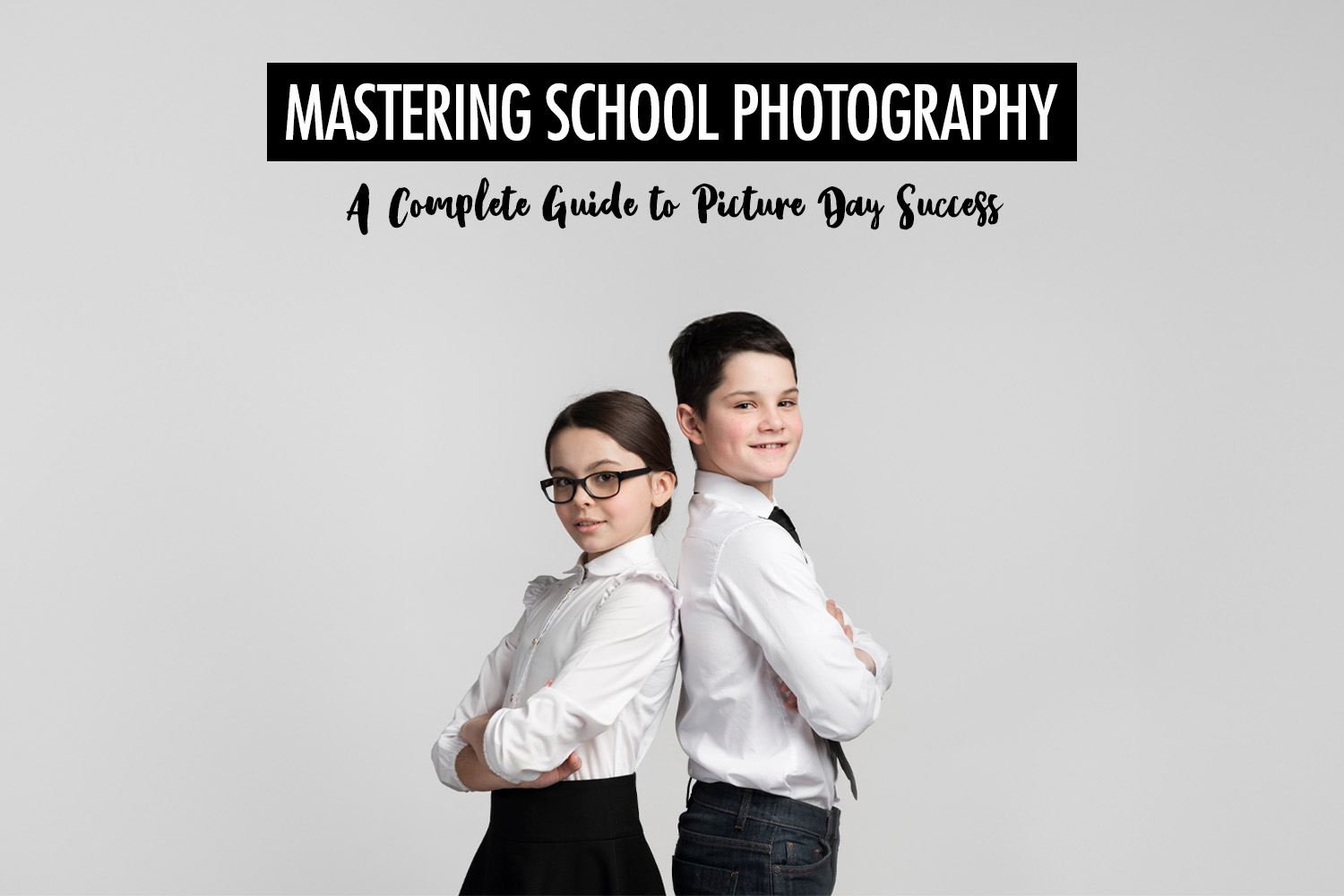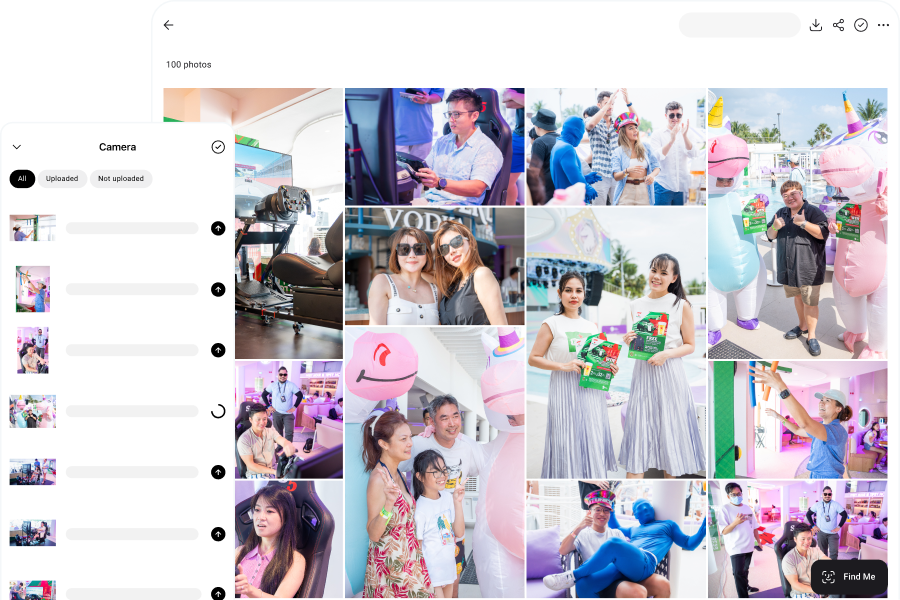School photography has remained a timeless tradition, one that holds emotional value for families, students, and educators alike. Picture day portraits preserve a moment in time, reflecting a student’s growth from year to year. These portraits often become treasured keepsakes, framed on walls, tucked into wallets, or shared with relatives as part of a family story.
For school photographers, picture day is an opportunity to create lasting memories and showcase professional skills. At the same time, it presents real challenges. You’re expected to work efficiently in high-volume settings, connect with children and teens almost instantly, and produce consistently high-quality school photos under tight time constraints. Whether you’re photographing five-year-olds or high school seniors, your ability to manage people, time, and light directly shapes the outcome.
This guide offers a practical walkthrough of the school photography workflow. We’ll explore the main types of shoots, along with posing tips, lighting setups, team coordination, and strategies for fast, reliable delivery. Whether you’re new to volume photography or looking to improve your existing workflow, you’ll find tools and ideas here to elevate your next school photoshoot.
You can also find our other guides on photographing students:
- 70+ Senior Picture Ideas, Poses and Tips for Stunning Portraits
- 70+ Graduation Photo Ideas, Poses and Tips for Stunning Shots
What Is Picture Day?
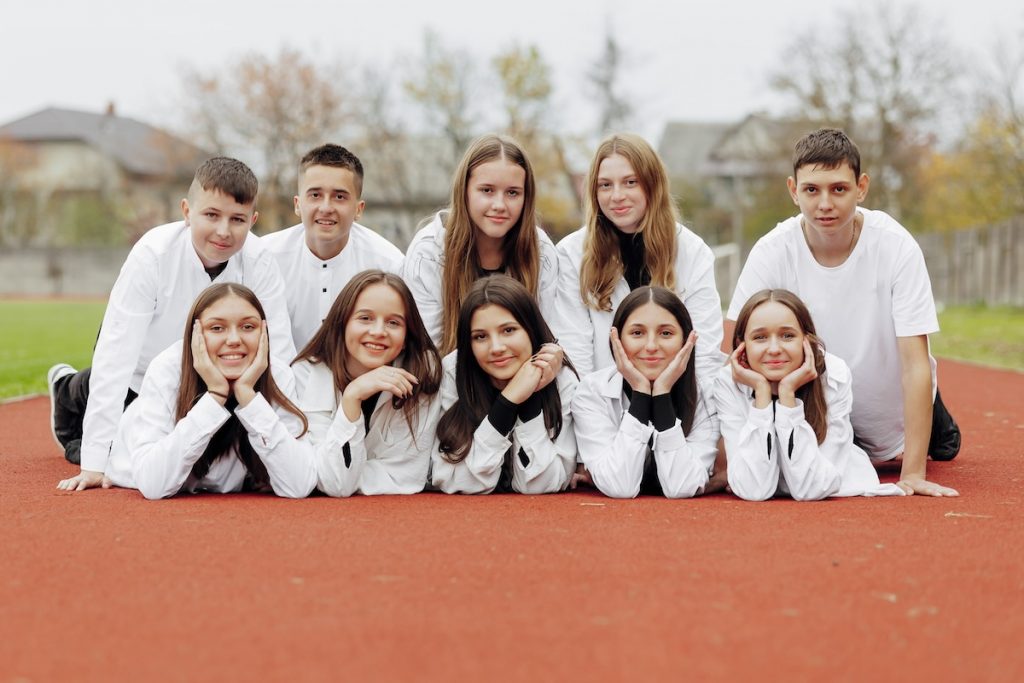
Picture day is a key event in the school calendar, typically happening once or twice a year in the spring and fall. While it may seem like a simple photo session, the logistics behind it are far more complex. For school photographers, understanding the structure of these sessions is essential to staying organized and maintaining a fast, professional workflow.
Most picture days revolve around a few core types of shoots:
- Student portraits: These are the highlights of picture day. Each student gets a few moments in front of the camera, often with different poses and expressions. The goal is to capture a clean, flattering school photo that parents will want to keep.
- Class group photos: Usually taken outdoors or in large indoor spaces, class photos bring together students and their teachers in one frame. These group shots are often used in yearbooks, school websites, and display boards.
- Special recognition portraits: Some schools may request additional photos for honor roll students, club members, or award recipients. These are usually scheduled separately or immediately after the main sessions.
- Make-up picture day: Many schools hold a second session for students who were absent or unhappy with their initial photos. Retake days follow the same structure but on a smaller scale, requiring flexibility from the school photographer to match the original look and feel.
Because of the number of students involved and the limited time available, speed and structure are everything. Photographers often work with school staff or assistants to move students through the process quickly. A well-planned system not only improves the experience for students and teachers but also makes post-production and delivery more efficient.
Posing With Purpose: Getting the Shot in Seconds
Consistency matters, especially when you’re photographing hundreds of students in a single day. That’s where preset poses come in. Using a curated set of poses tailored to different age groups not only ensures visual consistency across the gallery but also streamlines the entire workflow.
These pose sets should be simple and repeatable: elementary students might sit with their hands folded neatly on their laps or hold a small prop, while middle and high school students might stand at a slight angle with relaxed shoulders and a smile. The key is to maintain a clean, polished look that reflects your studio’s brand while subtly adapting to each age group’s body language and comfort level.
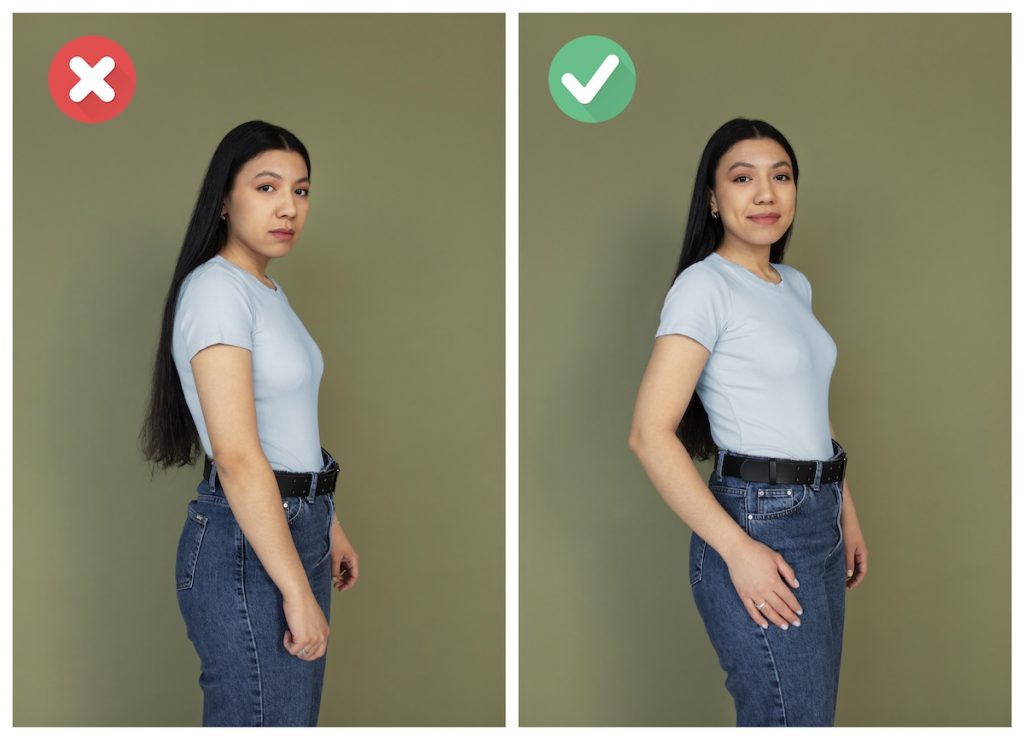
For picture day, most studios rotate through a few classic variations to give parents choice without slowing down the process. A typical set might include a straightforward head-and-shoulders shot, a slight turn with the head angled back toward the camera, and a fun, casual option with a bigger smile or a prop for younger grades. These variations allow you to create multiple purchase-worthy images while still keeping the session quick and predictable. The goal is to balance efficiency with enough variety to make the final gallery feel personal and intentional.
The biggest challenge is capturing a natural, relaxed expression in under 30 seconds. Many students feel shy, fidgety, or unsure when they step in front of the camera. It’s up to you to establish trust and comfort quickly. Start by building a fast rapport. A friendly greeting, a genuine compliment, or a playful comment can break the ice. Even a small smile from you often invites one in return.
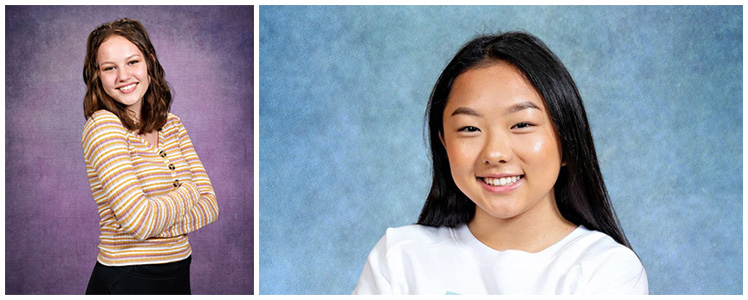
To help things along, consider using a pose board or practice station near the waiting area. These visual cues prepare students ahead of time, helping them feel more confident and less caught off guard when it’s their turn. A few seconds of preparation can make a noticeable difference in their posture and expression.
If you’re working in a team, coordination becomes crucial. Everyone—from the check-in assistant to the school photographer to the assistant—should be in sync. Speak clearly and calmly, especially with younger children, and use gentle body language when guiding them into position. Avoid rushing, but also don’t linger. Your tone and rhythm should be confident and efficient.
Remind your team that each student deserves a moment of focused attention, even in a high-volume setting. A smooth handoff between roles, with shared cues and consistent instructions, helps keep the line moving while still allowing every student to feel seen, respected, and comfortable in front of the camera.
Lighting That Works Every Time
Lighting can make or break a school photo. While there’s room for creative flair in other genres of photography, school photography is all about consistency. Parents and schools aren’t looking for dramatic shadows or cinematic highlights; they expect portraits that are evenly lit, well-exposed, and uniform across hundreds of students. The goal is to deliver a clean, professional look that translates well to both digital and printed formats. That means your lighting setup needs to be precise, repeatable, and ready to adapt to a range of conditions.
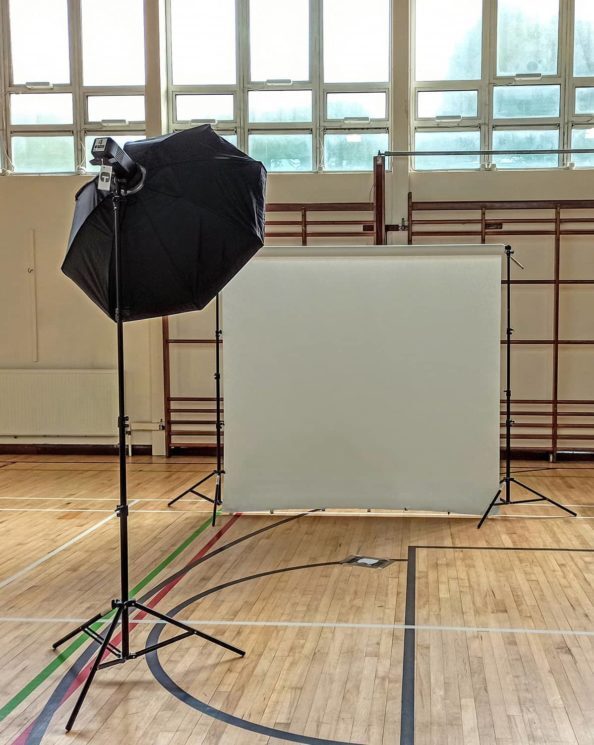
Most school shoots happen indoors, often in spaces not designed with photography in mind. Gymnasiums, cafeterias, and multi-purpose halls usually have high ceilings, reflective surfaces, and uneven ambient light that can complicate your setup. This is where battery-powered strobes become essential, especially when outlets are limited or poorly placed. Reliable light modifiers, such as umbrellas or softboxes, help soften shadows and reduce hotspots. Your key light should be positioned at a flattering angle, typically 45 degrees from the subject’s face. Take a few test shots to lock in exposure and white balance before getting started.
While most picture days rely on a safe, standard lighting formula, small variations can be used to add subtle variety while keeping the day running smoothly. For example, slightly adjusting the key light height for taller students, or adding a gentle hair light for seniors, can give each image a polished touch. Younger grades might benefit from softer lighting that flatters rounder features, while older students can handle a touch more shadow for definition. These micro-adjustments should be quick and deliberate, keeping the workflow efficient while ensuring every portrait feels thoughtfully lit.

If you’re working with a team or setting up multiple stations, maintaining uniformity is crucial. Make sure each setup uses the same lighting ratio, identical modifiers, and matching camera settings. This keeps the overall look consistent across all images and drastically reduces post-production work. Small differences in lighting can be surprisingly noticeable when photos are presented in a yearbook or school gallery. Standardizing your approach from the beginning helps maintain quality and saves time in the long run.
Workflow: From Planning to Delivery
A smooth, well-structured workflow is the backbone of successful school photography. Every stage of the process, starting from early coordination all the way to image delivery needs to be efficient, predictable, and scalable. When you’re working with schools that run on tight schedules and strict routines, even small inefficiencies can throw the picture day off track.
Pre-Shoot Preparation

Begin by aligning with school administrators on the shooting schedule. Break down the timeline by grade level and class to create a logical flow that minimizes student wait time and avoids overcrowding. It’s crucial to clearly communicate expectations to both the school and your photography team ahead of time.
Prepare all necessary gear in advance, and if possible, conduct a walkthrough of the space where you’ll be shooting. This helps you plan for power sources, traffic flow, lighting angles, and other logistical details that are often overlooked.
Picture Day
Efficiency is everything. Aim to photograph 45 to 60 students per hour, per school photographer, while maintaining consistent quality throughout. Arrive early to set up lighting, backdrops, and props. Whether you’re working in a gym, cafeteria, library, or temporary outdoor space, make sure your setup is stable and ready to go.
Use tethering or a live cloud upload system to review images in real time and create automatic backups as you shoot. If you’re working with a team, define everyone’s responsibilities clearly—for example, assigning one person to pose students while another handles the camera. Keeping the workflow streamlined helps maintain energy and keeps the schedule on track.
Post-Shoot Workflow
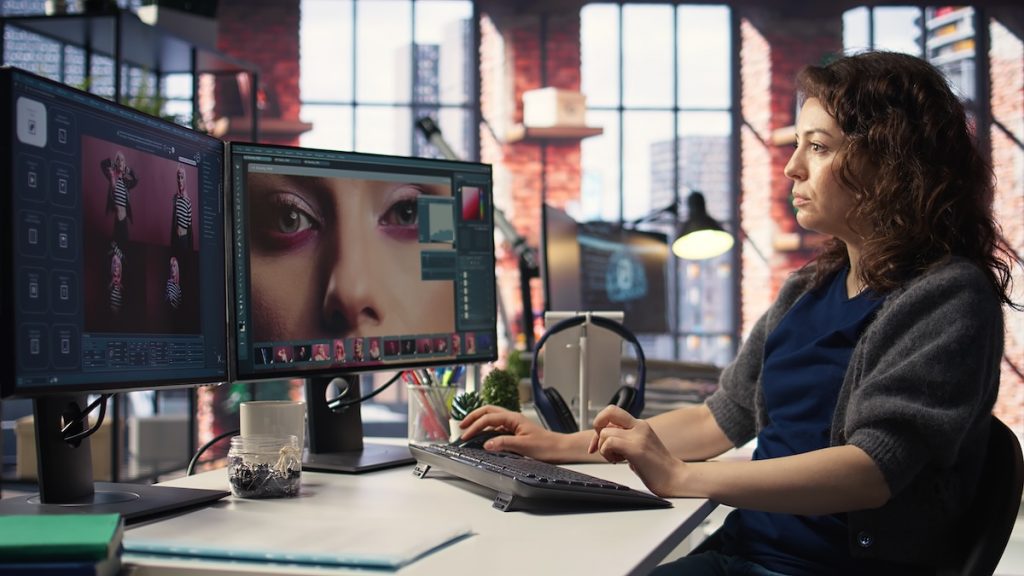
Once the session wraps up, the work continues behind the scenes. Efficient culling helps you move quickly through large volumes of photos, keeping only the best shots. Basic retouching or batch editing can be applied to ensure a polished and professional look. Tagging student names and organizing by class becomes easier with software that supports facial recognition.
When your images are ready, an automated gallery system can take care of the heavy lifting. Parents should be able to access their child’s portraits through a secure, easy-to-navigate gallery. While many schools now expect digital delivery as the default, offering optional physical products such as print packages, class composites, and photo IDs can boost parent satisfaction and generate additional revenue streams.
Privacy, Data Security, and Compliance

Photographing school events involves sensitive information. Since you’re dealing with minors, every image you take is considered personal data and falls under strict protection laws like FERPA (Family Educational Rights and Privacy Act). These regulations were designed to safeguard students’ educational records, and in the context of school photography, that extends to how images are stored, shared, and accessed. Violations can lead to not just legal consequences but also a loss of trust with schools and families, which is something no professional wants on their record.
This is why your picture day delivery system must be built with privacy-first features. Secure, student-specific galleries ensure each family can only view their own child’s images. Until a match is confirmed, unmatched faces should be blurred or hidden entirely. End-to-end encryption, both during upload and while stored, is no longer optional—it is a baseline expectation for working with schools. These are not “nice extras” but fundamental safeguards that protect you, your clients, and your reputation. Some platforms address this by default, delivering photos to private galleries tied to each student and using facial recognition to make sure no family ever sees another child’s images.
In the end, strong privacy protocols don’t just protect you from liability but also help establish you as a responsible, school-friendly partner. Schools are increasingly cautious about who they allow on campus, and demonstrating your commitment to data security can set you apart from other school photographers. It’s not just about following the rules, it’s about showing that you take your role seriously in protecting the privacy and dignity of every student you photograph. That level of professionalism builds long-term trust, which is critical in the school photography industry.
Differentiating Yourself in a Crowded Market
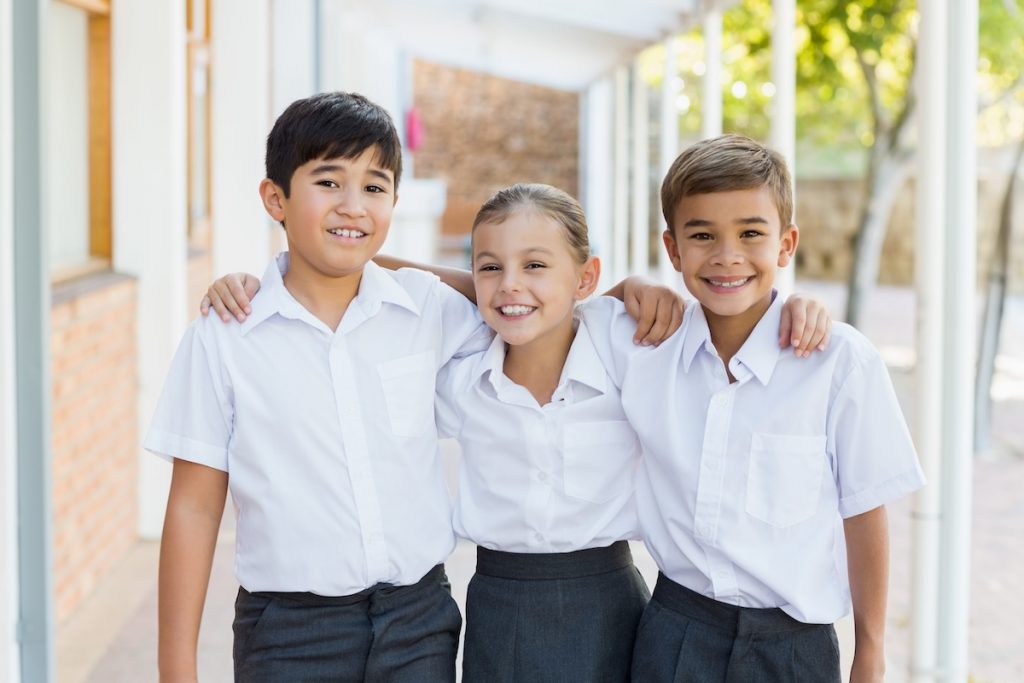
Let’s face it: most schools already have a go-to photography vendor they’ve been using for years. Breaking into that space can feel like trying to solve a puzzle with missing pieces. But even in a market where tradition and convenience often dictate decisions, there are still plenty of ways to stand out. It starts with understanding what schools truly value—things like professionalism, ease of use, and a positive experience for both staff and parents. Once those fundamentals are in place, the next step is to position yourself not just as a school photographer, but as a reliable, forward-thinking partner.
Modern delivery tools can give you a significant edge. Rather than relying on outdated gallery systems or making schools wait several days for download links, opt for platforms that enable real-time or same-day delivery, individual galleries for each student, and QR code access that’s quick and intuitive. When schools and parents experience a smoother, more tech-savvy workflow, it makes your service feel more premium. You can also add branding elements like your logo, school colors, or event name to the galleries and watermarked previews. These small touches instantly elevate your presentation and show that you’re thoughtful about the details.
Finally, it’s the little things outside the school photoshoot that often make the biggest impact. Include complimentary portraits of teachers and staff as part of your package—these are frequently forgotten, but schools appreciate the gesture. After the photoshoot, send a thank-you card or a few printed samples to the school administrators. It doesn’t take much, but it leaves a lasting impression. These personal touches demonstrate that you’re not just there for a one-off job, but interested in building a long-term relationship. In a saturated market, the school photographers who consistently go the extra mile are the ones who get remembered and invited back.
Instant Photo Delivery and Sales With Honcho
Honcho is a real-time photo delivery platform built for high-volume school photographers who need to deliver images instantly without slowing down their workflow. While most gallery tools are designed for post-event delivery, Honcho works live, making it an ideal solution for fast-paced environments like picture day.
Instant delivery improves the overall experience for both schools and families. Instead of waiting days or even weeks for galleries to be published, parents can view their child’s portraits within minutes of the photo being taken. This creates excitement, builds trust, and shows schools that your process is efficient and professional.
For schools, it results in a smoother, more modern picture day. Staff no longer have to chase missing galleries or answer repeated questions from parents about photo access. It benefits you too, with faster engagement, fewer support requests, and a brand experience that stands out from traditional school photography vendors.
Before picture day, you can set up a gallery in the Honcho app and generate a custom QR code. This code can be shared with parents through school emails, printed flyers, or parent portals. Once parents scan the code, they are directed to a secure gallery. From there, they simply upload a selfie of their child. Honcho’s facial recognition handles the rest by sorting and delivering only the images their child appears in.
If families scan the QR code before picture day, Honcho automatically sends a notification by email or WhatsApp as soon as the photo is uploaded. Whether it is a kindergartener proudly showing their first school portrait or a teenager ready to share their new look, parents get the images in real time while the moment still feels fresh.

You do not need to change your workflow to use Honcho. You can tether your camera to the Honcho app or upload photos directly to the cloud as you shoot. Images are matched, organized, and sorted automatically. You can apply editing presets on the spot or have an assistant handle live editing while you continue shooting. The system stays fast and reliable from start to finish.
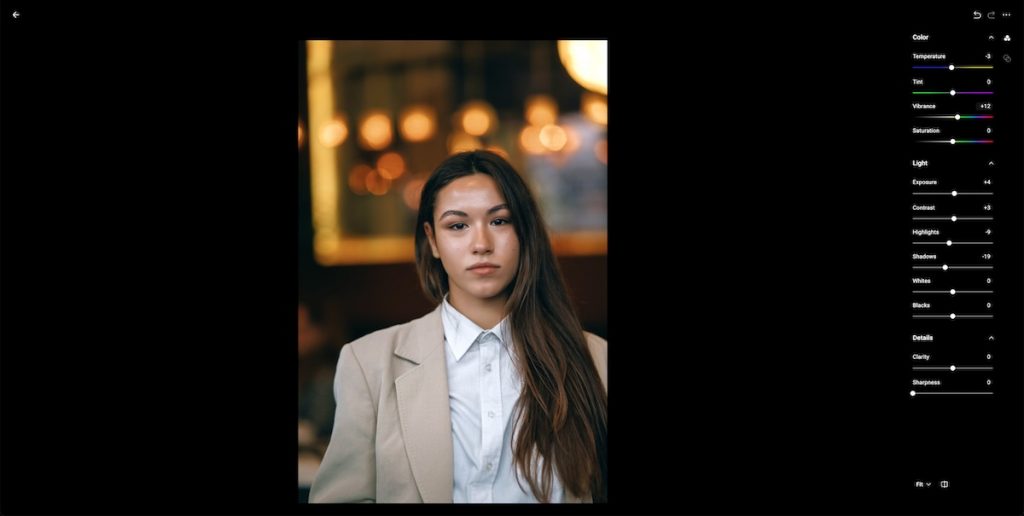
Honcho helps you earn more from every shoot by selling your photos. And because the photos are delivered live, at the height of the excitement, you capture sales when families are most eager to buy. Everything runs automatically while you shoot—just add an online store with one click and make your gallery instantly shoppable.
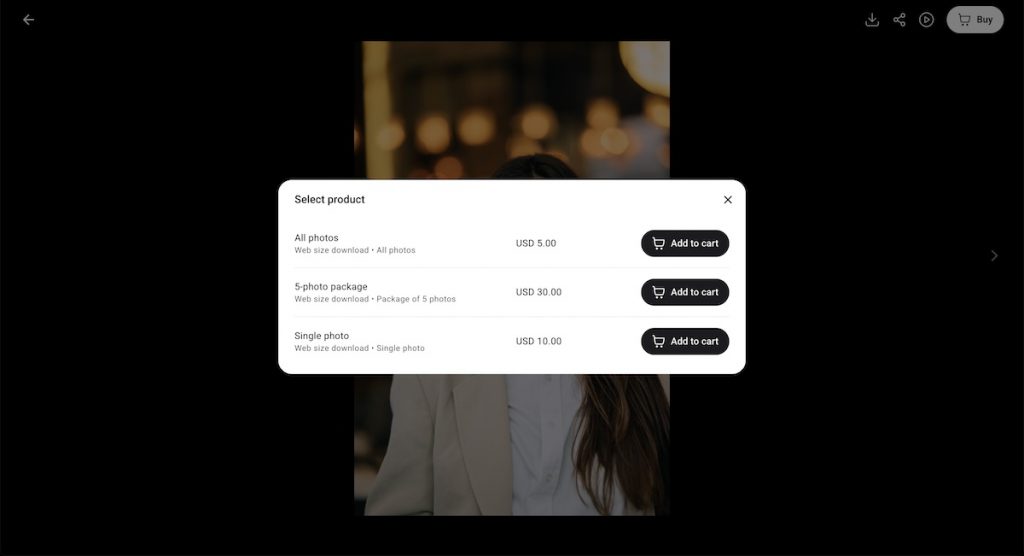
Honcho eliminates the usual pain points of school photography delivery. Parents no longer deal with passwords, long delays, or crowded galleries. They receive a personalized and secure experience with just a few taps. For picture day, this level of simplicity turns a routine process into a standout moment.
Honcho also supports business growth. Every school photo delivered can include your branding, logo, and contact details. When parents share these images with relatives or on social media, they also promote your studio. This passive exposure often leads to new inquiries and bookings.

To help generate more leads, Honcho includes customizable lead capture tools. You can collect emails, feedback, or interest in future sessions during or after picture day. This helps grow your school photography network without requiring any extra effort on your part.
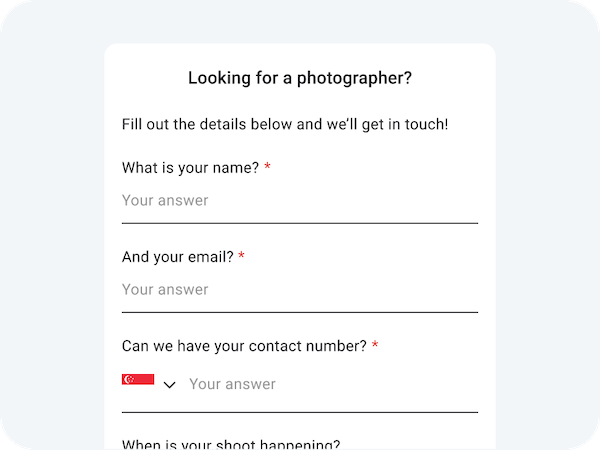
After the event, Honcho provides access to detailed performance analytics. You can view how many people scanned the QR code, how many face searches were made, and how often your profile was viewed. These insights are valuable for understanding your reach and can also be shared with school administrators as part of your service report.

Because everything runs quietly in the background, you stay focused on what matters most. Honcho allows you to keep picture day moving efficiently while delivering high-quality school photos instantly and maintaining a professional, stress-free experience for everyone involved.
Building Loyalty and Revenue Growth
School photography has built-in potential for repeat clients. Many schools hold multiple picture days each year, such as spring and fall portraits, along with sports team photos, graduation coverage, and special events. Securing these contracts ensures a steady flow of work while building stronger relationships with the schools you serve.
To encourage long-term partnerships, consider offering volume discounts for schools that book multiple sessions in a year. This not only provides them with better value but also locks in your schedule well in advance, giving you predictable revenue. Schools appreciate knowing they have a trusted photographer committed to their needs year after year.
You can also increase revenue by offering upsell options that appeal directly to parents and families. Framed prints, ID cards, and specialty photo gifts can all be added to your product range. These extras often become treasured keepsakes while generating additional profit for your studio.
Moreover, offering a retake guarantee helps boost parent satisfaction. It reassures families that if their child has a bad hair day, an awkward smile, or an accidental blink, they will still receive a school portrait they love. This commitment to quality service builds trust and often results in positive word-of-mouth referrals, which further strengthen your client base.
Finally, Honcho makes it easier to manage multiple picture days for the same school by keeping all galleries organized and accessible in one platform. Parents and staff can quickly revisit previous sessions, and your studio can deliver new photos instantly while reinforcing your brand each time. This consistency helps schools see you as a reliable partner, making it more likely they will renew contracts year after year.

